Tecnam P2010 Demonstration Tour Across Australia
After hearing that the Tecnam factory was shipping a four-seat P2010 aircraft to Australia for demonstrations, I asked Bruce Stark, from Tecnam PTY LTD Australia, if he required a crew member to tag along to help out. For me, this would be an excellent way to learn about the new aircraft model and pass on accurate information to our clients who may be interested in purchasing one. Bruce agreed and the dates were set.
Departing the Gold Coast on the 26 September at 6.00am we set up flight plan way points for the autopilot to take us to Alice Springs some 10.5 hours flying time away. The Tecnam P2010 has an endurance of 568 NM with no reserve, however, the pilot and crew would need a comfort stop well before we covered this distance. Flying out over the Gold Coast was awesome. For a person used to New Zealand cities, I found the Gold Coast massive like many other cities in Australia.
After dodging low cloud and crossing the Great Dividing Range, we flew over hundreds of square miles of flat and very dry farmland. There has been no significant rain in this area for quite a number of years. Farming on these plains would certainly be very challenging for the farmers and their families. Three and a half hours flying time had us landing at Charleville for a refuelling and relief stop. Charleville is a small service town in western Queensland supporting the local graziers with fuel supplies and basic living needs.
Quilpie was our next stop as Bruce had a small trim indicator part to deliver to a client here. In outback Queensland, there are many Tecnam P92 Classic aircraft being used for stock spotting as this makes stock management very efficient on the large grazing properties, some of which are over a million acres. Many paddocks are over a thousand acres making aerial spotting the only efficient way to locate cattle for the teams on the ground.
After departing Quilpie we flew to Birdsville (Pop 140) for fuel before spending the next few hours flying across the Simpson Desert to Alice Springs. Having your vehicle or aircraft break down in such a remote unforgiving area would not be an event one would enjoy very much. One of the interesting features of this area is the sand dunes that run true north and south. It’s to be noted on the western face of these dunes the angle is about 35 degrees and the eastern side about 15 degrees which indicates the predominant wind direction.
Nearing Alice Springs, the topography changed with many unusual features including small mountainous areas and large rocks that look as they were dropped from the sky. Alice Springs airfield was very busy as it is the hub of many services along with the well-known Royal Flying Doctor Service. Our very comfortable overnight accommodation was in the main part of the town. After a nourishing meal and good night’s sleep, we were off to the airport early to check the aircraft over and become airborne at first light.
Uluru or Ayres Rock, as it was also known, was our next destination to refuel and use the bathroom. Similar to Milford Sound tourist flights, there is a procedure to fly close to the rock and we followed this on departure for a photo opportunity before setting the autopilot to climb to 8,500 and continue west.
Warburton, a remote Aboriginal community that survives on the refuelling of passing aircraft for income, was our next stop for Avgas. Fuel cost is $ 3.65 for Avgas and $2.95 for Jet A1. There are few options for fuel in the remote parts of Australia so it is important to support communities like Warburton by purchasing Avgas. The refuelling people told me during this operation that fuel is supplied by road from more than 700 km away.
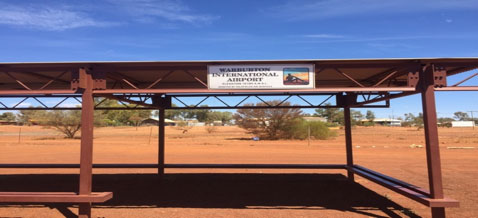
Kalgoorlie was our planned overnight stay and as we flew a direct path at 8,500 ft between Warburton and Kalgoorlie we did encounter two IFR Beech Barons approaching from the opposite direction at 9,000ft. Our on-board ADS-B traffic advisory system worked well with plenty of notice being given of the approaching aircraft. We encountered our first scattered clouds, since Gold Coast, on approach to Kalgoorlie.
Departing Kalgoorlie the next morning, we flew over some of the mine sites where gold is being extracted. This area has the reputation of having the largest hole in the world – in the middle of a city. It wasn’t long after departure we were treated to our first sight of green pasture since leaving the east coast. This area of ‘wheatbelt’ farmland between Kalgoorlie and Perth just left me speechless. It’s certainly huge compared with NZ. These farmers at least had some greenery to look at, due to more regular rainfall.
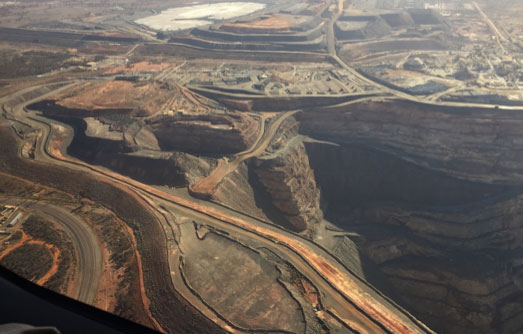
Navigating our aircraft into the airport at Jandakot proved interesting, due to the number of airborne training aircraft in the vicinity and the use of dual runways, one for arrivals and departures and the other dedicated mainly to circuits. Jandakot is the busiest GA airfield in Australia with circuit aircraft requiring start-up permission due to restrictions on the number in the circuit at any one time.
After landing and parking on tie-downs at the Royal Aero Club of WA, we picked up our rental car and traveled to our short term apartment accommodation in Freemantle, a very go-ahead place now, with no shortage of restaurants, accommodation, and local attractions. Fremantle is an old port from the days of the wool clippers and had a massive make-over when Australia defended the Americas Cup back in the 80’s. Over the next five days we caught up with many of Bruce’s clients and demonstrated the Tecnam P2010 to Aero clubs, private owners and the Department of Environment, which uses aircraft for fire spotting in the WA.
After leaving Jandakot we headed south to stay on a farm at Margaret River with Mike and Vivian. This area reminded me very much of New Zealand with green grass and sheep grazing along with other animals. Our Hosts, Mike and Vivian, really looked after us, taking us to a very good local restaurant in the evening and putting us up in their luxurious guest accommodation.
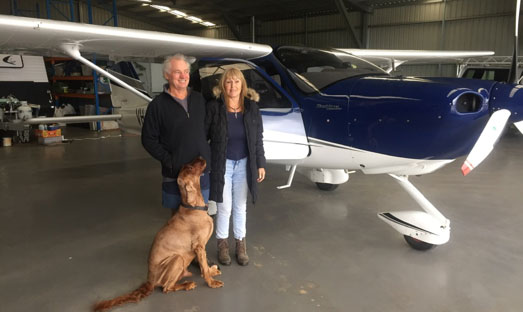
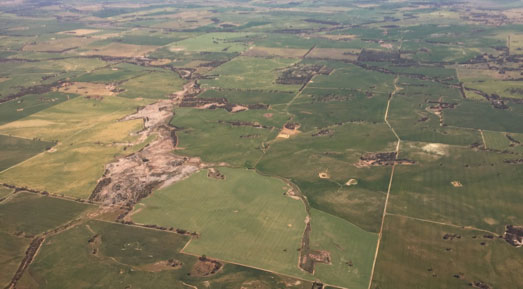
After waiting for low cloud and rain showers to move on before departing Margaret River it was off to Busselton for a quick catch up at the airfield before again avoiding weather and heading to Bunbury for more demos and a comfortable bed for the night.
An early departure from Bunbury had us climbing to 9,500 ft and tracking east to the rural town of Lake Grace for more demos, then onto Esperance for fuel before climbing to 9600 ft to pick up a good tail-wind as we headed to the Caiguna Road House. This small business was a new experience for me as it sits beside the Nullabor Highway in the middle of nowhere, supplying food, accommodation, and fuel to travellers.
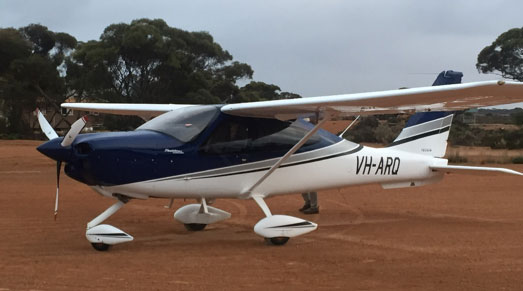
It was cloudy as we became airborne early next morning en route to Port Augusta some 621 NM east. Cruising at 9600 ft on this leg we saw ground speeds over 190 knots, which meant it didn’t take the time we had expected.
Reaching Port Augusta quickly meant Bruce had time in the day for some demos before we headed out to a local restaurant for supper, followed by checking into a motel and watching the All Blacks play another game.
The following day dawned with a little cloud around but this burned off quite quickly as we visited Broken hill to catch up with clients. Always interesting to pass over the various mines and to see the long overcast mine through the middle of the city of Broken Hill. The avgas bowser was broken and no parts in Australia so we headed south to Mildura for a planned catch up with a P2008 client and to fill the gas tanks.
From Mildura, it was again up to high altitude for a quick trip with a good tail-wind to Narromine in central western New South Wales. This airfield has accommodation cabins in a caravan park close to the aircraft tie-downs and the taxi fare into town is cheap especially if you visit the town’s services club for a tasty meal.
Narromine to the Gold Coast next day was a short 3-hour flight before landing at Mason Field from where we had departed some 10 days earlier.
Over this time we flew 46.2 hours, burned plenty of avgas and covered some 4451 NM. After this trip, I had a good feel and understanding of this very comfortable aircraft. The P2010 performed every bit as good as it looks, as Bruce put it through its paces in many types of flying conditions and crosswinds we encountered and the different runways we used.
Our TECNAM P2010 trip details
Engine: Lycoming 390 IO 215 Hp
Seats: Four
Interior: Premium leather and trim
Exterior: Premium paint
Useful Load: 390 KG
Screen: Garmin Nxi 1000 Twin screen
Auto Pilot: Garmin GFC 700
Traffic: Garmin GTS 800 TAS
Transponder: Garmin GTX345R Mode S with ADS-B IN and OUT
Distance covered: 4451 NM, Airfield to Airfield, excluding extra trips and demo mileage
Flying Time: 46.2 hrs
Average fuel consumption: Cruising between 5000 – 10000 ft 40 – 45 lts per hour
@130 kts TAS
Climbing fuel consumption: 78 lts per hr at full throttle on take-off reducing to 50-55 lts in climb
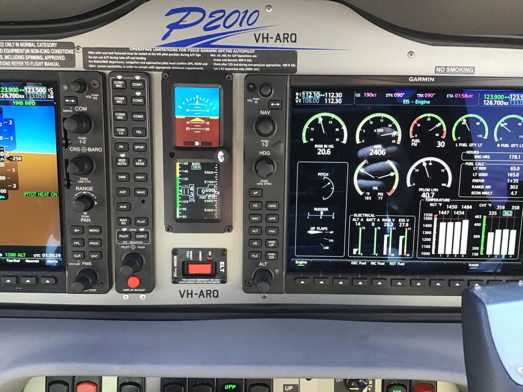
Contact Neil for all your New Zealand Tecnam sales and parts enquires:
+64 (0)27 683 1148
Website: Invincible Design
